Now is the perfect time to explore the latest trends in outdoor spaces. Many exciting ideas exist, from bright yellow marigolds and soft, feathery ferns to cultural influences and beautiful sculptures. The gardening world is full of fun trends that are changing how we design and enjoy our outdoor spaces.
Whether you’re an experienced gardener or just starting, learning about these popular trends can inspire new ideas and help you refresh your garden. Let’s take a closer look at these cool gardening trends and see how they are changing garden design.
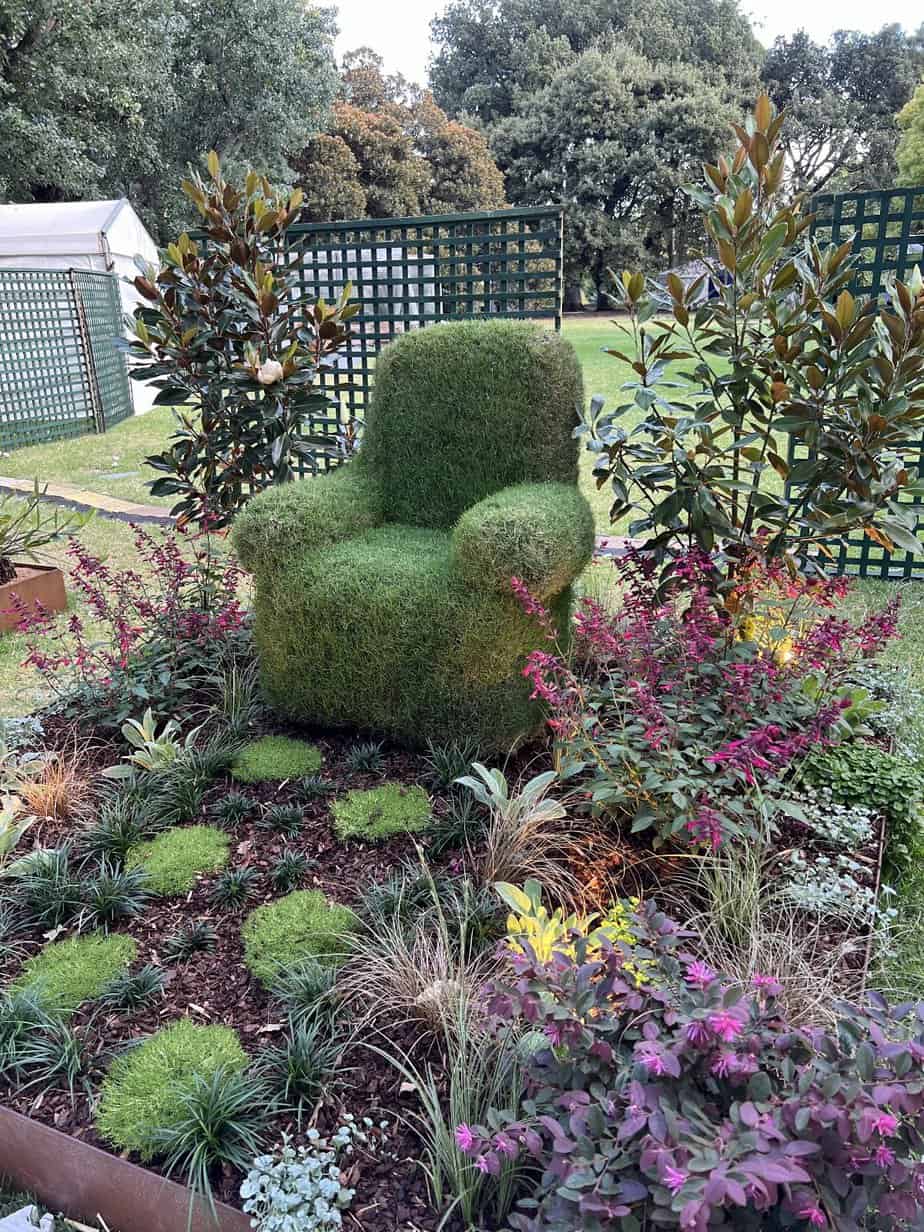
Stunning Sculpture Trend
Sculptures are a popular trend in gardening because they allow you to show off your personal style in your outdoor space.
Many people love adding sculptures to their gardens because they bring art and interest to the area. Whether you choose traditional, modern, or fun sculptures, each reflects your unique taste and adds a special touch to your garden.
This personal touch helps create a garden that feels like an extension of yourself, allowing you to shape your outdoor space in a way that’s all your own.
Sculptures are flexible and easy to match with nature, and they also stand out as eye-catching features. They can make your garden feel calm and peaceful, adding to the relaxing atmosphere.
Whether you pick a classical marble figure or a modern abstract design, sculptures can improve the look and feel of your garden, making it a memorable and beautiful outdoor retreat.
Curvacious Curves Trend
Curves are becoming popular in garden design because they create a natural flow and movement in your outdoor space. They help soften the look of the landscape and give it a more relaxed, organic feel, just like how nature doesn’t grow in straight lines.
Curves also make the garden feel more peaceful and calming, which makes the space feel more inviting and balanced.
On top of that, curves can make your garden look bigger and more open. Here are two popular ways to use curves in your garden:
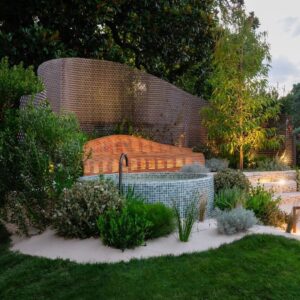
Curved borders: Curved borders are a simple way to add curves to your garden. You can easily add them to your existing garden beds. Softening the edges with curves makes the garden look more interesting and natural. These curves help create a sense of balance and harmony in the design.
Curved water features: Adding curved water features like ponds, streams, or waterfalls can make your garden peaceful and lively. They become focal points, attract wildlife, and improve the overall mood of your outdoor space.

Trending Water Features
In 2024, water features remain a popular gardening trend. They are cherished for their ability to transform outdoor spaces into tranquil retreats and enhance the overall ambience of any landscape. Due to their multifaceted benefits, these features continue to captivate garden enthusiasts.
Enhanced Relaxation: Water features provide auditory and visual stimulation, soothing the senses and promoting relaxation amidst the hustle and bustle of modern life. Water in a garden has a calming effect on the mind and body.
The gentle sounds of flowing water or the subtle movement of a fountain can significantly reduce stress and anxiety, promoting a sense of relaxation. Sitting by a water feature provides a peaceful retreat where one can unwind, meditate, or enjoy the tranquil atmosphere. This contributes to one’s overall wellbeing, making outdoor space a haven of peace and serenity.
Whether it’s the gentle trickle of a fountain or the tranquil flow of a stream, the calming sounds of water can create a serene atmosphere, offering a welcome escape from everyday stressors. They attract wildlife, providing a source of refreshment for birds, butterflies, and amphibians. However, it’s essential to consider the potential impact of water features on the local ecosystem.
Birds are attracted to water for drinking and bathing, while aquatic plants provide habitat and food sources for insects and other small animals. This influx of wildlife adds vitality and interest to the garden, creating a dynamic ecosystem that enhances the natural beauty of the surroundings.
Choosing the Right Size Water Feature
Should I purchase a small or large water feature for my garden? A couple of factors to consider include the size of your garden, your personal preferences, and the overall design aesthetic you wish to achieve.
Small water feature: Tabletop fountains or compact ponds are ideal for smaller gardens or limited spaces. They can add a touch of tranquillity and elegance to a patio, balcony, or courtyard without overwhelming the area.
Small water features are also easier to install and maintain, making them a practical choice for homeowners looking to incorporate water elements into their gardens with minimal effort.
Large water feature: Extensive water features, such as cascading waterfalls, expansive ponds, or elaborate water gardens, make a bold statement and can become the focal point of a more extensive garden or landscape.
These features create a sense of grandeur and drama, adding visual interest and making the experience more immersive for visitors. They offer more opportunities for customisation and creativity. It allows gardeners to incorporate a broader range of aquatic plants, fish, and other elements to enhance the overall ambience of the garden.
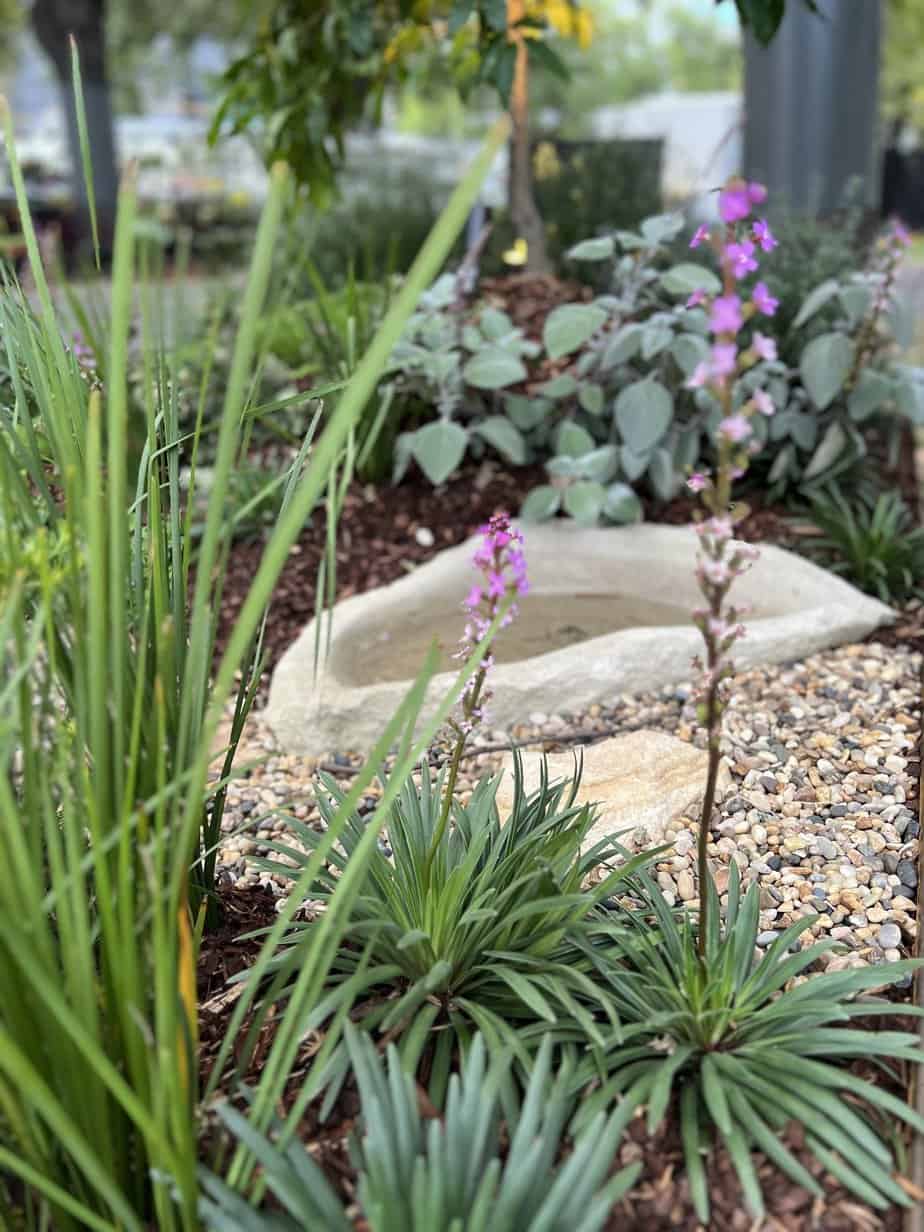

The Importance of Colour Trends
In 2024, using colour in your garden will be not just a trend; it’s a vibrant revolution. Colour adds vibrancy and visual interest to outdoor spaces, creating dynamic, engaging landscapes that delight the senses.
Using a diverse palette of colours in your garden is not just a trend; it’s a creative expression. It allows you to craft unique and personalised outdoor sanctuaries that reflect your tastes and preferences. The strategic use of colour can create focal points, define garden areas, and guide the eye throughout the landscape.
This adds depth and dimension to the design. The creative freedom is what makes gardening with colour so exciting and inspiring. Flowers, colourful foliage, and decorative elements like garden art or furniture create a dynamic and visually appealing environment. Colour can also be used strategically to evoke specific emotions and moods.
Warm tones like reds, oranges, and yellows create a sense of energy and warmth, while cool tones like blues and greens evoke calmness and tranquillity. Shades like warm beige, soft taupe, and sandy tones bring a sense of natural elegance to garden palettes, providing a versatile backdrop for vibrant blooms and lush foliage.
You can also add pops of bold colours, such as vibrant reds, oranges, and yellows, which infuse energy and excitement. Deep, luxurious jewel tones such as emerald green, royal blue, and plum add a touch of drama and sophistication to garden schemes, creating a sense of opulence and glamour. The strategic use of colour can evoke different moods and emotions, enhancing the overall ambience of the garden.
Cultural Identity Trends
Gardens have become very important to many people. They’re not just a couple of pots out on the patio you water daily. One trend I have noticed lately is gardens that encompass a particular culture or heritage that interests their gardener.
People increasingly seek ways to express their heritage, values, and personal connections to the land. In an era marked by globalisation and rapid urbanisation, reconnecting with cultural roots through gardening offers a profound sense of belonging and continuity.
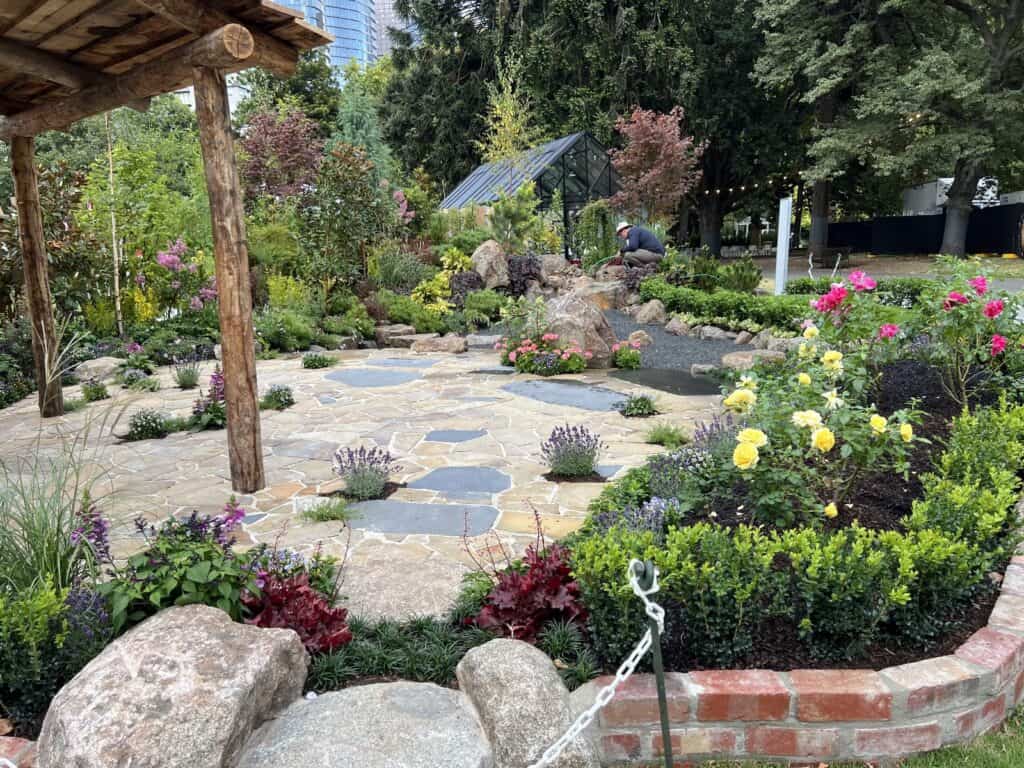
You can incorporate plants, design elements, and traditions from their cultural backgrounds into their outdoor spaces, celebrating diversity and honouring ancestral wisdom. This trend fosters a deeper connection to one’s heritage and promotes cross-cultural understanding and appreciation within communities.
You can incorporate cultural identity into your gardens by using particular colours of culturally significant plants or integrating traditional architectural or decorative elements. Cultural plants, such as those with historical or symbolic importance, can be chosen for their aesthetic appeal and cultural relevance, serving as a meaningful representation of heritage within the garden.
Additionally, integrating traditional architectural features, sculptures, or decorative elements emblematic of a specific culture can further enhance cultural identity in outdoor spaces. These elements can be a powerful way to honour and celebrate your heritage while creating a unique and meaningful outdoor environment.
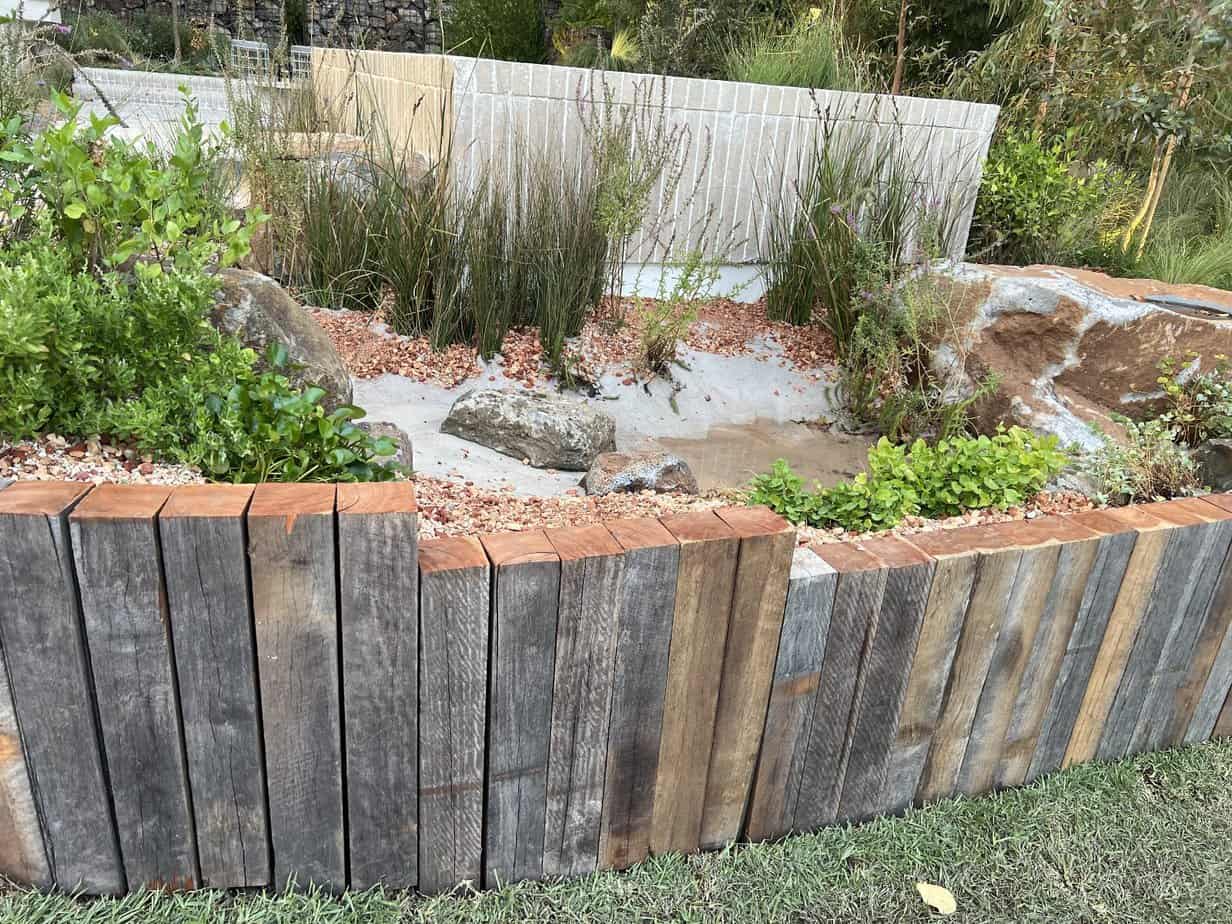
Trending Textures
Gardeners embrace various textures to add depth, interest, and sensory appeal to their outdoor spaces. It creates contrast and diversity, contributing to a rich and dynamic landscape.
By incorporating plants with varying textures, such as rough or smooth foliage, or utilising hardscape elements like stone or wood, gardeners can create visually compelling and tactile experiences within the garden.
This trend allows the creation of visually stimulating and immersive outdoor environments that engage the senses and contribute to a more captivating and aesthetically pleasing landscape. Some popular textures include:
Contrasting Foliage: Mixing plants with different leaf shapes, sizes, and textures creates visual interest and variety in the garden. Textured foliage, such as velvety lamb’s ear, spiky yucca, or glossy hosta leaves, adds tactile appeal and enhances the overall aesthetic.
Architectural Elements: Incorporating structural elements like trellises, arbours, and pergolas adds dimension and texture to the garden. These features support climbing plants, such as vines or roses, which add a vertical element and create visual interest against walls or fences.
Natural Materials: Wood, stone, and bamboo add an organic texture to garden design. Wooden furniture, stone pathways, and bamboo fencing lend a rustic charm and create a harmonious connection with the surrounding environment.
It’s evident that the world of garden design is brimming with creativity, innovation, and timeless traditions. From the vibrant allure of colourful blooms to the captivating use of textures and the meaningful incorporation of cultural identity, these trends offer a wealth of inspiration for enthusiasts and novices alike.
As we look to the future, gardening will continue to be a source of joy, creativity, and connection to nature. Whether you’re drawn to the time-honoured elegance of sculptures or the modern embrace of sustainable practices, there’s a gardening trend to suit every individual’s unique vision. As you tend to your own green haven, may these trends inspire you to infuse your outdoor space with beauty, meaning, and a touch of your own personal masterpiece.


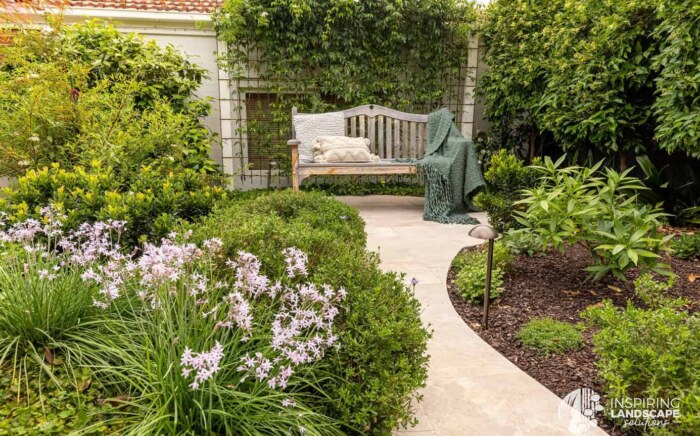
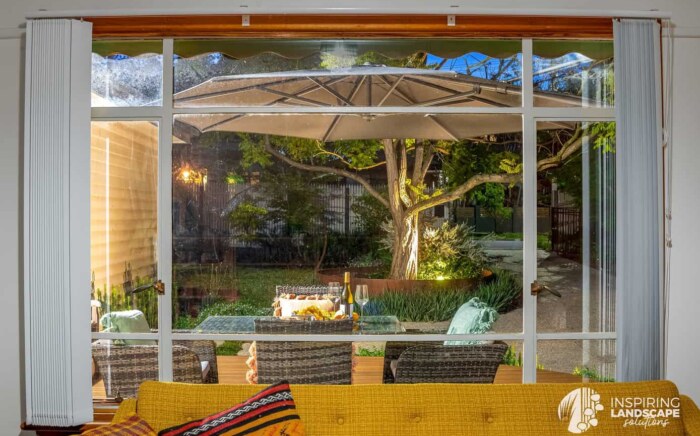
Leave a Comment